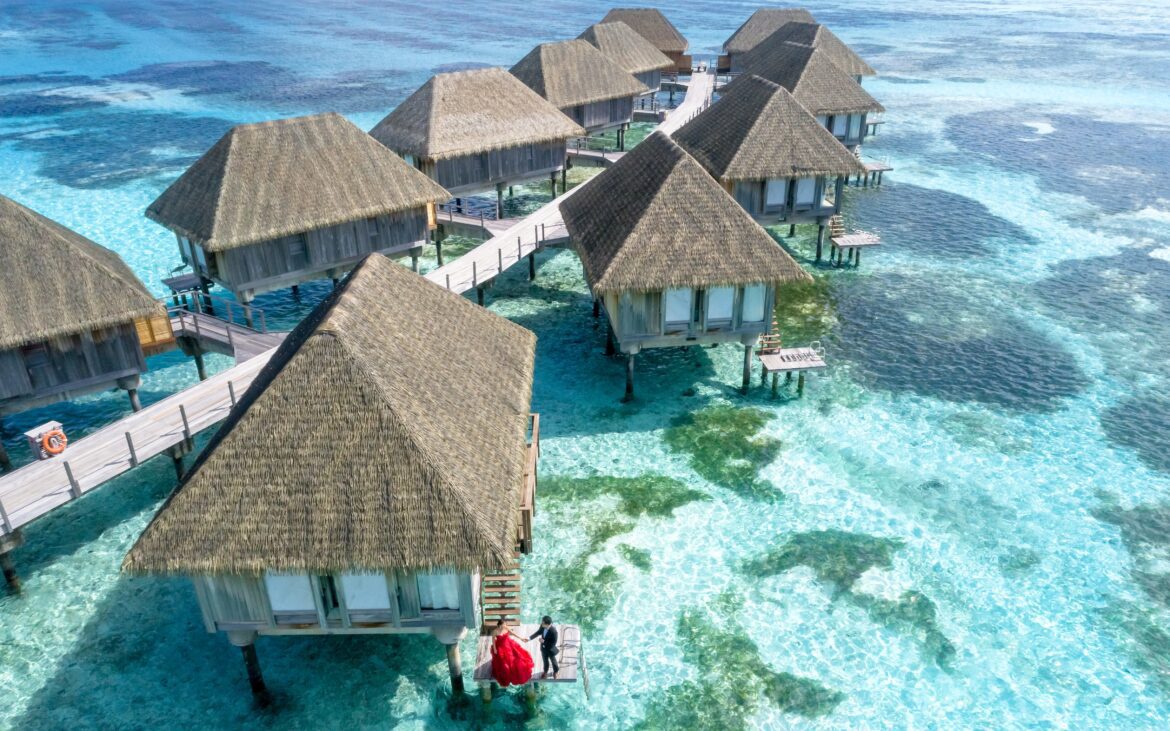The Maldives, a group of islands in the Indian Ocean, are well known for their breathtaking natural beauty, clean waters, and opulent resorts. However, the Maldives are also home to a rich cultural and architectural heritage that is worth visiting, in addition to its stunning beaches and coral reefs. We will dig into the intriguing world of Maldivian art and architecture in this article, providing insights into the distinctive cultural expressions of this idyllic tropical paradise.
Art in the Maldives:
Maldivian art is strongly influenced by the history, culture, and natural surroundings of the nation. Islamic aesthetics have always had a significant effect on Maldivian art, with elaborate calligraphy and geometric designs adorning mosques and public areas. The Maldivian identity of the art scene has been preserved over time while absorbing current and contemporary inspirations.
“Thaana,” the distinctive script used to write the native language, Dhivehi, is one of the most noteworthy examples of traditional art in the Maldives. Thaana calligraphy, which is frequently represented on wooden panels or etched onto the coral stone, is known for its graceful curves and flowing lines. This classic style of calligraphy is not only beautiful to look at, but it also has great cultural significance.
The beautiful wooden carvings found in traditional Maldivian homes are known as “Laajehun,” which is another well-known art style in the Maldives. Intricate naturalistic designs including floral patterns, birds, and marine life may be seen in Laajehun sculptures. The architectural components of the homes are given a touch of vibrancy by the vivid colors that are frequently painted on these wonderful sculptures.
The Maldives has recently seen the rise of contemporary art culture, with local artists experimenting with a variety of topics and techniques. The capital city of Male has seen a proliferation of galleries and art centers that display the creations of gifted Maldivian artists. These works of modern art frequently incorporate the artists’ own life experiences, environmental concerns, and the Maldives’ quickly evolving social dynamics.
Architecture in the Maldives:
Maldivian architecture is a representation of the history and cultural heritage of the island nation. Traditional Maldivian architecture is distinguished by its functionality, simplicity, and harmony with the environment. The architectural design of the Maldives has been affected by the lack of natural resources and the requirement to adapt to the tropical environment.
The “Bodu Beru,” a conventional Maldivian drum-shaped building, is one of the most recognisable architectural landmarks in the Maldives. The Bodu Beru has a thatched roof and is made of coral stone. In the past, it was used as a venue for villagers to congregate for festivities, cultural events, and storytelling sessions. Although these structures are less frequent today, Maldivian society still values them highly.
The “Mosque” is another outstanding piece of Maldivian architecture. The Maldives, an Islamic nation, is peppered with exquisitely constructed mosques that adhere to Islamic architectural standards. Intricate ornamental elements like delicate latticework, calligraphy, and geometric designs are frequently found in mosques. The Islamic Centre in Male, which has a dazzling golden dome and a minaret that provides sweeping views of the city, is the largest mosque in the Maldives.
The Maldives have recently seen an increase in the number of opulent resorts with cutting-edge architectural styles. These resorts frequently use ecological building techniques and include historic aspects to mix in harmoniously with the surrounding landscape. With their thatched roofs and timber construction, overwater villas have come to represent luxury in the Maldives and provide visitors with an unmatched opportunity to coexist with nature.
Exploring the Art and Architecture:
Travelers can set off on a journey that incorporates historical monuments, art galleries, and architectural marvels to fully appreciate the art and architecture of the Maldives. Visit Male’s Old Friday Mosque, commonly known as Hukuru Miskiy, as your first stop on your explorations. With its walls made of coral stone and elaborate carvings, this mosque from the 17th century serves as a superb illustration of traditional Maldivian architecture.
Then, make your way to Male’s winding streets, where you’ll discover a plethora of art galleries featuring the creations of regional artists. Visit the National Art Gallery, which houses a sizable collection of modern and traditional Maldivian artwork. Get to know the artists, discover how they think up their ideas, and discover more about the regional art scene.
A trip to one of the luxurious resorts in the Maldives is a need for anyone looking for a distinctive architectural experience. These resorts are architectural marvels that offer the chance to immerse yourself in the spectacular beauty of the Maldives while savoring world-class hospitality, whether it’s an overwater villa or a beachside cottage.
Conclusion:
In conclusion, the Maldives’ art and architecture provide an enthralling window into the nation’s cultural past and its peaceful coexistence with nature. The Maldives has something to captivate every art and architectural aficionado, from traditional calligraphy and wooden carvings to modern art and cutting-edge resort designs. Visitors can better understand the Maldivian culture and its rich creative heritage by learning more about the art and architecture of this tropical paradise.

